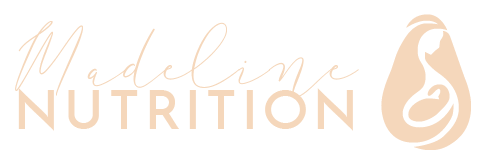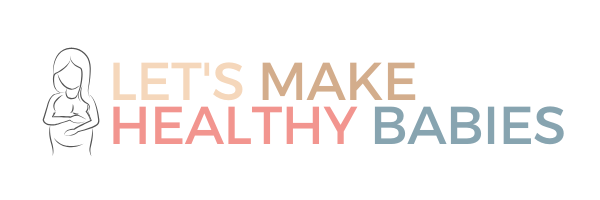Maternal Blood Volume Increase + Iron Needs in Pregnancy
QUICK PSA: Imagine having a science-backed resource at your fingertips, full of approachable research, professional supplement and food recommendations, and answers to all your preconception and pregnancy questions and needs. My Signature Course, Let’s Make Healthy Babies, gives you handheld guidance through all nine months of your pregnancy, whether it’s your first or your seventh.
As a very rough average, the typical healthy human body contains about 5 liters of blood. Your blood is responsible for a number events that go on your body that are necessary for life:
transporting oxygen and nutrients to your muscles, while also taking waste the other direction
supporting your skin as it gets rid of extra heat in your body
aiding in the digestion and absorption of your food as it flows through your digestive tract
“A healthy woman bearing a normal sized fetus, with an average birth weight of about [7 lbs, 4.4 oz], will increase her plasma volume by an average of about 1250 ml, a little under 50% of the average non-pregnant volume … .” (Hytten)
“Iron requirements are greater in pregnancy than in the non-pregnant state. Although iron requirements are reduced in the first trimester because of the absence of menstruation, they rise steadily thereafter; the total requirement of a 55-kg woman is ≈1000 mg.” (Thomas)
Because of this, “routine oral iron administration should be recommended during pregnancy, certainly after 28 weeks gestation.” (Taylor) …and I would argue that starting even earlier with supplementation can provide you with optimal wellness and prevent a myriad of problems later in pregnancy and during your postpartum recovery.
To get a true feel for where your iron stores are at, it’s necessary to test serum ferritin levels in the blood. Anything below 20 µg/L is concerning If you enter pregnancy already low, or find yourself depleted at some point in your pregnancy, relying on dietary iron (iron coming from the food you consume as opposed to supplementation) probably won’t cut it. (McMahon)
Feeling Depleted?
Here are the common signs and symptoms of iron-deficiency:
the sensation of a tight chest or heart palpitations
fatigue and extremely low energy
cold extremities (hands or feet)
hair loss
dizziness
Dietary Sources of Iron
Grass-fed meats, organ meats, seafood, egg yolk, legumes, seeds (hemp, chia, flax), spinach.
Vitamin C is an important cofactor for iron and can help drastically with iron’s absorption. Ergo, consuming vitamin C-rich foods alongside iron-rich foods is beneficial.
By cooking in a cast iron pan, your iron intake can be upped quite a bit as well. (Geerlings)
Supplement Recommendations
Iron bisglycinate is a form widely known among functional practitioners to be better absorbed with less (if any) negative side effects. A daily 27mg is recommended as a starting point in pregnancy.
An herbal blend by Gaia can be great for maintaining iron levels.
Iron bisglycinate from Klaire Labs is an excellent practitioner-recommended supplement to replenishing low stores. Use my patient code Z91 to order.
Common Blood & Iron Terms Defined
Anemia — in which you lack enough healthy red blood cells to carry oxygen throughout your body [there are many different kinds!]. (Mayo Clinic)
Ferritin — is a blood cell protein that contains iron. A ferritin test helps your doctor understand how much iron your body is storing. If a ferritin test reveals that your blood ferritin level is lower than normal, it indicates that your body's iron stores are low, and you have iron deficiency. (Mayo Clinic)
Hemoglobin — a protein of red blood cells that contains iron and carries oxygen from the lungs to the tissues, and carbon dioxide from the tissues to the lungs. (Merriam-Webster)
Transferrin [iron] saturation — a value (given as a percentage) that tells you how much of your serum iron is bound or being used effectively.
TIBC (total iron-binding capacity) — a test to see if you have too much or too little iron in your blood.
References:
Geerligs, P. D., Brabin, B. J. and Omari, A. A. (2003), Food prepared in iron cooking pots as an intervention for reducing iron deficiency anaemia in developing countries: a systematic review. Journal of Human Nutrition and Dietetics, 16: 275-281. doi:10.1046/j.1365-277X.2003.00447.x
Hytten F. Blood volume changes in normal pregnancy. Clin Haematol. 1985 Oct;14(3) 601-612. PMID: 4075604.
McMahon, Lawrence P. “Iron deficiency in pregnancy.” Obstetric medicine vol. 3,1 (2010): 17-24. doi:10.1258/om.2010.100004
Taylor, D. J., Mallen, C. , McDougall, N. and LIND, T. (1982), Effect of iron supplementation on serum ferritin levels during and after pregnancy. BJOG: An International Journal of Obstetrics & Gynaecology, 89: 1011-1017. doi:10.1111/j.1471-0528.1982.tb04656.x
Thomas H Bothwell, Iron requirements in pregnancy and strategies to meet them, The American Journal of Clinical Nutrition, Volume 72, Issue 1, July 2000, Pages 257S–264S, https://doi.org/10.1093/ajcn/72.1.257S



